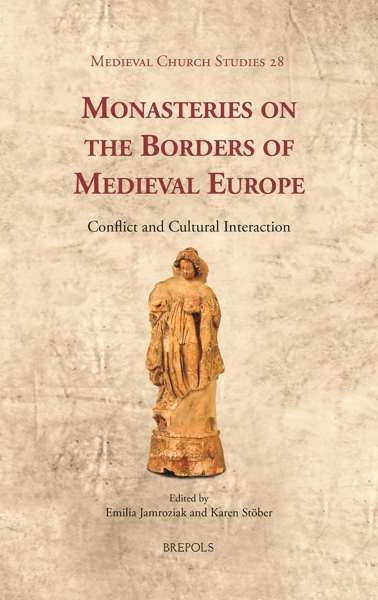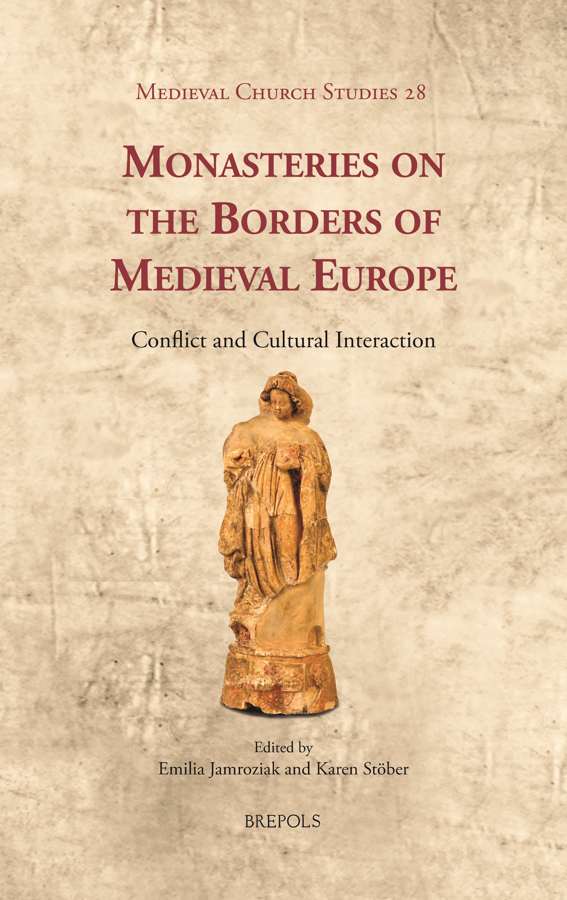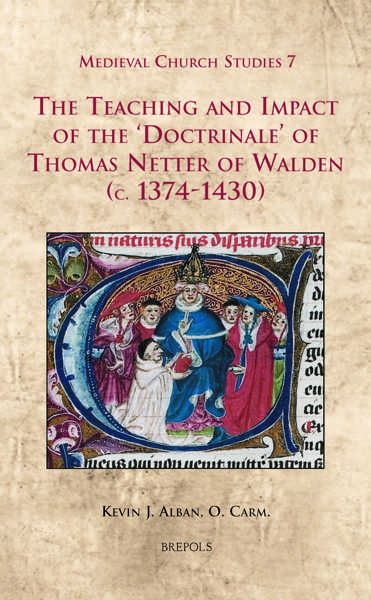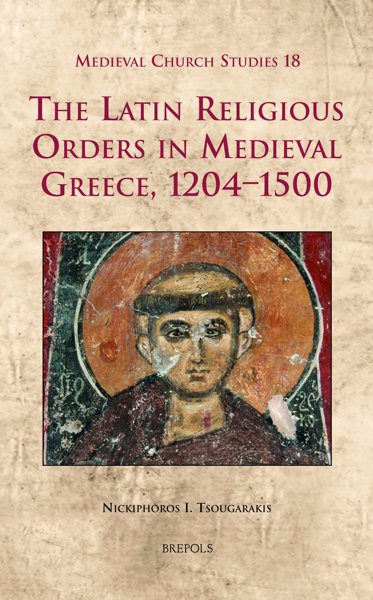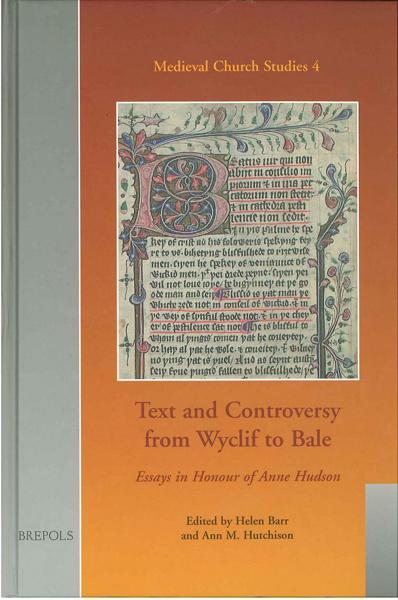
Monasteries on the Borders of Medieval Europe
Conflict and Cultural Interaction
Emilia Jamroziak, Karen Stöber (eds)
- Pages: x + 274 p.
- Size:156 x 234 mm
- Illustrations:9 b/w
- Language(s):English
- Publication Year:2014
- € 95,00 EXCL. VAT RETAIL PRICE
- ISBN: 978-2-503-54535-6
- Hardback
- Available
- € 95,00 EXCL. VAT RETAIL PRICE
- ISBN: 978-2-503-55162-3
- E-book
- Available
The first ever collection of studies devoted to the encounters between medieval monasteries and frontier societies.
"Interdisziplinärer Austausch und die Vielfalt kulturwissenschaftlicher Fragestellungen in den verschiedenen geisteswissenschaftlichen Fachdisziplinen machen aus ehemals scheinbar eindeutigen Begriffen polyvalente Termini." (Gudrun Gleba, in: Francia-Recensio, 2014/3)
"(...) this collection does manage to introduce the frontier monasticism of a less known era, treating borders around the northern, eastern, and southern edges of the Latin Church that have been less explored in mainstream English scholarship. The quality of these precise local studies is high, and each conveniently offers its own appended bibliography." (John Howe, in: The Medieval Review, 15.01.22)
"The second section is more groundbreaking, but the first five articles are also commendable for their solid research. (...) Different readers will draw different lessons from these very different articles. Considering them as a whole, they do shed light on the meaning of frontiers and borders in medieval Europe, especially in terms of monastic foundations." (Brian Patrick McGuire, in: Revue d'Histoire Ecclésiastique, 2015/1, p. 374-376)
"It is to be hoped that the many strengths of this fine collection of papers will open ears to the editors’ plea: ‘Nuns of the frontiers merit their own dedicated study’." (Robert Curry, in: Parergon, 31.2, 2014, p. 178-180)
"Monasteries on the Borders highlights the multifaceted nature of the frontier. It represents an impressive range of disciplines, subjects, and geographic coverage, and underlines the importance of understanding the total experience of these border communities to determine how they were shaped by their conditions—and how they affected the locality. The book poses new and stimulating questions that should inspire further research." (Julie Kerr, in: The Catholic Historical Review, 101.3, 2015, p. 615-616)
"Au total, ce livre offre de multiples éclairages sur l'articulation complexe entre vie régulière et situation frontalière." (Marie-Madeleine de Cevins, in: Revue Mabillon, n.s. 26, 2015, p. 360-361)
As a historical and cultural phenomenon, monasticism always had a close connection with frontiers. The earliest monasteries were believed to be founded in wildernesses and deserts, thus existing beyond society and the inhabited world in general. As intercessors praying for their patrons and benefactors, monastic communities also existed on the border between the earthly and the spiritual worlds.
In medieval Europe, however, the frontier nature of monasticism had specific manifestations in addition to the founding myths of monastic wilderness. In the twelfth and thirteenth centuries the expansion of Latin Europe in East-Central Europe, the Iberian Peninsula, Scandinavia, and into the Holy Land and Greece opened possibilities for extending monastic networks and establishing new houses. One of the most important parts of this process was the interaction between these new religious communities and the social world around them-an interaction that was characterised by various shades of hostility, cooperation, and adaptation to the local social and cultural framework.
This is the first collection to consider the phenomenon of monastic frontiers in a cross-disciplinary manner. The book’s ten chapters explore the role of monasteries in maintaining political and cultural borders, in breaking and sustaining linguistic boundaries in late medieval Europe, as well as in building and stabilizing Latin Christian cultural identities on the northern and southern frontiers of Europe. Using a wide range of textual, archaeological, and material evidence, an international group of authors examines the expansion of monastic and mendicant networks in Scandinavia, Iberia, East-Central Europe, the British Isles, northern France, the Balkans, and Frankish Greece.
Introduction — EMILIA JAMROZIAK and KAREN STÖBER
Conflict and Its Resolution
Piety, Politics, and Plunder across the Anglo-Welsh Frontier: Acquiring the Relics of Winifred and Beuno — BRIAN GOLDING
Croatia and the Borders of Christianity: The Fortified Cistercian Abbey of Castrum Thopozka — ANA NOVAK
Alvastra in Östergötland, Sweden: A Medieval Political and Religious Centre of Power — MARIE HOLMSTRÖM
Boundary Narratives and Tales of Teutonic Treachery on the Frontier of Latin Christendom: The Early Fourteenth-Century: Disputes between the Kingdom of Poland and the Teutonic Ordensstaat — PAUL MILLIMAN
Contested Frontiers: Mendicant Provinces Between Germany and Poland During the Late Middle Ages — HANS JOACHIM SCHMIDT
Acculturation and Cultural Interactions on the Frontiers
Skriduklaustur Monastery in Medieval Iceland:A Colony of Religiosity and Culture — STEINUNN KRISTJANSDOTTIR
Religious and Society on the Borders of Christendom: The Regular Canons in Medieval Catalonia — KAREN STÖBER
On the Frontier of the Orthodox and Latin World: Religious Patronage in Medieval Frankish Greece — NICKY TSOUGARAKIS
Angevin Religious Patronage in the County of Maine: The Assertion of Identity, Authority, and Legitimacy, 1110–51 — KATHRYN DUTTON
Staging the Jew: Liturgical Drama and Frontier-Building in Twelfth-Century Laon — KATI IHNAT
Index
